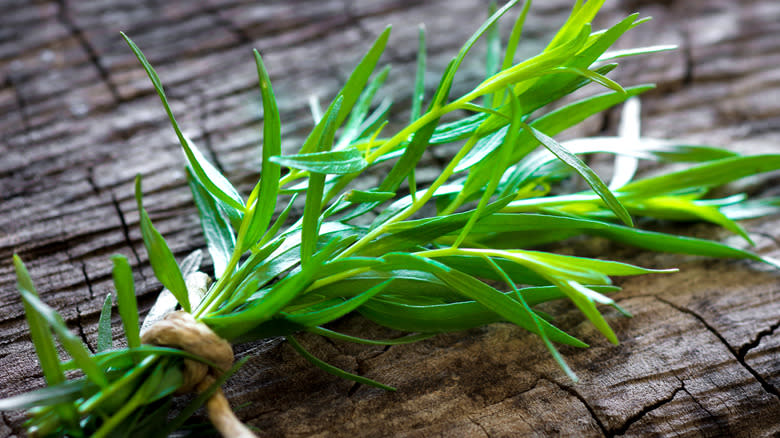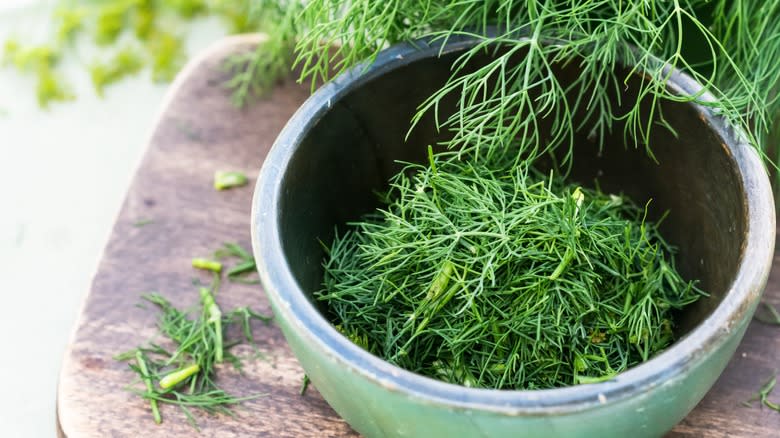What Makes Tarragon The Perfect Dill Substitute For Your Dish

As aromatic herbs go, tarragon is sometimes misunderstood, partially because of its faux-licorice flavoring or anise-like undertones. As fate would have it, that's exactly what makes it the perfect substitute for recipes requiring fresh dill. That licorice-like flavor is defining in both tarragon and dill, even though the two herbs belong to different botanical families. Tarragon is a perennial from the Asteraceae family, while dill is an annual Apiaceae herb.
Other than sharing vibrant green hues, their structures are quite different. Tarragon sports flat, thin blades with pointed tips, while dill has free-flowing, feathery leaves branching in tiny frond configurations. It's somewhat surprising how the two genetically and texturally disparate herbs have such comparable tasting notes, but it definitely comes in handy when needing a substitute for dill.
It's important to know that some subtle flavor differences do exist. When using fresh dill in a recipe, the licorice-like flavor tends to be light with citrusy overtones. When substituting dill with fresh tarragon, you'll get a touch of bitterness, and the licorice notes are likely to be intense, natural, and earthy, often with hints of anise or fennel. When using dried versions of each, the deeper flavors of tarragon may be less apparent, so it's pretty much a 1:1 swap. If you're lucky enough to have fresh tarragon on hand, it's still a viable substitute for fresh dill but requires a little extra consideration.
Read more: Vinegar Cooking Hacks You'll Wish You Knew Sooner
Dill And Tarragon Compatibility

With widespread availability in France, tarragon has a strong presence in French cuisine, even earning the moniker "King of Herbs." It holds a solid spot in what's known as fines herbes, a mix of four fresh herbs commonly used in French dishes. That combination of herbs creates a delicate balance when used together in classic French cuisine -- but fresh tarragon on its own needs a little more forethought, especially as a substitute for dill.
Because of the stronger impact fresh tarragon makes on a recipe, it has the potential to overpower fellow ingredients. The last thing you want is for your dill-based tzatziki sauce, potato salad, or salmon filet to have a predominant licorice taste. When substituting fresh tarragon for fresh dill in cooked foods such as seafood, meats, or vegetables, a 1:1 swap is still okay, but it could benefit from a longer cook time. Introducing tarragon to the dish early in the cooking process can help tame its flavor, bringing it closer to what you'd get from fresh dill.
Dried tarragon makes for an easier swap when replacing dried dill in cold foods such as salad dressings, seasoned vinegars, cold sauces, and chicken salad mixtures. An even substitution typically does the trick. There's also a third option when seeking a substitute for dill, though it may be less compatible than tarragon. Fennel also brings faux-licorice flavors to the table, albeit in a milder form.
Read the original article on Tasting Table.

